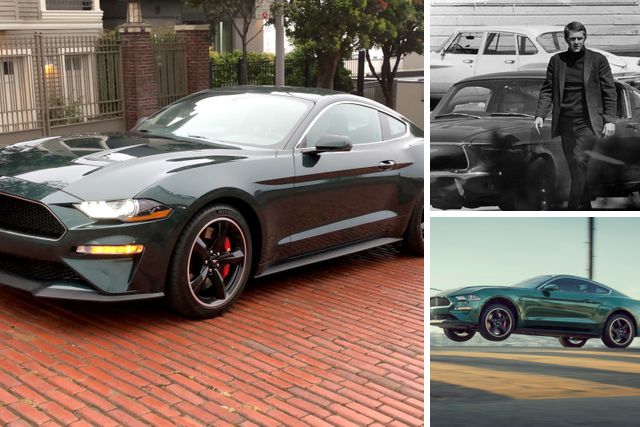
The greatest chase scene in movie history would’ve ended a lot sooner if Steve McQueen could’ve got his hands on a 2019 Ford Mustang Bullitt. The Dodge Charger that eluded McQueen’s 1968 Mustang fastback for 12 minutes of brilliant filmmaking never would have stood a chance.
Just in time for the 50th anniversary of the movie “Bullitt,” the car is everything a Mustang fan or movie lover could ask for: Fast, smooth, responsive and steeped in the same effortless cool McQueen brought to the movie and the chase scene he helped choreograph and drive.
The Dark Highland Green 2019 Bullitt I drove through the streets of San Francisco, surrounding hills and coastline didn’t scream for attention, but still drew admiring looks and questions. The 480-horsepower, 8-cylinder’s rumbling back-pressure burps turned heads, but don’t worry, electronic exhaust controls provide a stealth mode so you won’t wake the neighbors or alert the hit men you stake out.
That exhaust note, incidentally, was tuned from recordings of the same ’68 GT McQueen drove in the movie. Ford engineers listened to 1968 soundtrack masters the filmmakers recorded of the car racing around Willow Springs race track in California
Filming the legendary chase scene
It took 10 days shooting 12 hours a day to nail the chase scene, a whopping one-sixth of “Bullitt’s” total shooting schedule, USC film school prof Danny Bilson said.
McQueen was an avid car fan, and director Peter Yates began his career as a race car driver and team manager.
“I don’t want a crash-fest. I want a realistic pursuit,” Yates said at the time.
McQueen later said he saw the film as a modern Western, in which his character strapped on the Mustang like a gun belt. He drove the car during parts of the chase. You can recognize most of those scenes because you can see McQueen’s famous blue eyes in the rearview mirror. The mirror was removed for scenes with stunt drivers.
A famous shot in which McQueen misses a turn and leans out to look back as he reverses furiously to continue chasing the hit men’s Charger was a mistake. McQueen really did miss the corner and kept going to avoid ruining the painstakingly arranged shoot. That’s the only moment in the whole chase where the final edit of the movie made it appear faster than what happened, Bilson said.

